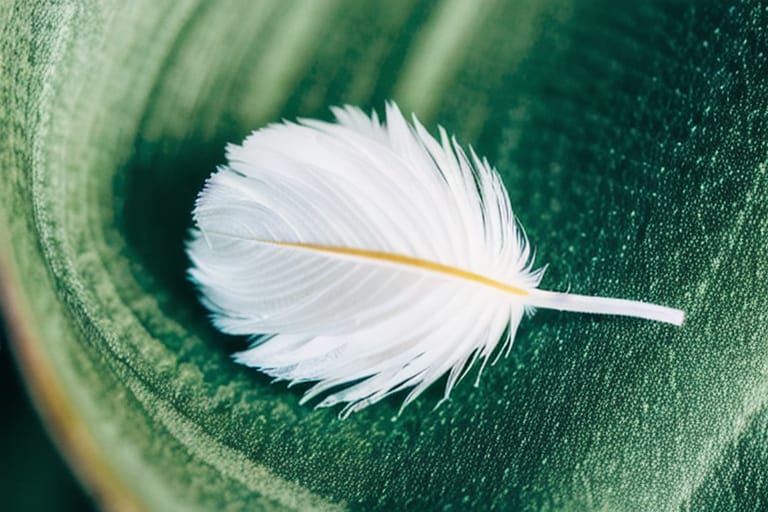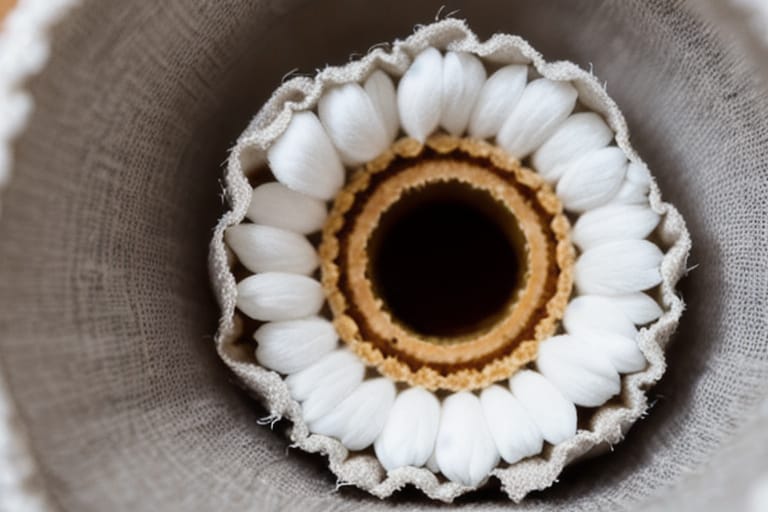Do you ever find small feathers poking out from your luxurious down comforter? Despite their opulent reputation, many down comforters lose some feathers over time. But is this normal, and should it impact your comfort?
This comprehensive guide tells you everything you need to know about feather loss in down comforters. Read on to learn what causes feathers to escape, when leakage is considered excessive, and how to choose a quality comforter less prone to shedding.
What’s Inside a Down Comforter?
Before diving into feather loss, let’s review what comprises a down comforter:
- Down – The soft, fluffy clusters of insulation that give warmth
- Feathers – The stronger, spine-like structures that provide loft and support
- Cover – The outer fabric shell, typically cotton or polyester
- Baffles – The stitched fabric walls that separate sections of fill
Down and feathers from ducks and geese provide exceptional warmth and comfort. But they need an outer cover with baffle boxes to contain them inside your comforter.
Is It Normal for Down Comforters to Lose Feathers?
Losing a few feathers over time is very common for a down comforter. But excessive, consistent loss indicates an issue.
Occasional Minor Leakage is Normal
Even quality down comforters with densely woven covers and sturdy baffle construction can lose some feathers:
- Friction while sleeping can force feathers through tightly woven fabric
- Feathers may poke through stitches or piping over time
- Washing and drying cycles stress the materials
Losing a few feathers per year is normal. You likely won’t notice minor loss impacting your comfort.
Factors Impacting Shedding
Many variables influence how readily a down comforter loses feathers:
- Thread count – Low thread counts can’t contain feathers as effectively
- Cover fabric – More breathable fabrics like cotton lose feathers easier
- Quality – Cheaper comforters skimp on materials and construction
- Age and use – Older comforters tend to lose more feathers
- Washing method – Machine washing stresses fabrics more than dry cleaning
Higher end comforters shed much less due to tighter weave covers that better contain the down and feathers.
When Should I Worry About Excessive Feather Loss?
You don’t want feathers constantly poking out of your comforter. At what point is feather loss problematic?
Impact on Warmth and Loft
Losing large amounts of its feather filling quickly degrades a comforter’s warmth and loft:
- Clusters and feathers provide most of the loft
- Down alone compresses too easily without feather “spines”
If your comforter becomes thin or flat, excessive feather loss is likely to blame rather than normal compression over time.
Evaluating Longevity
Comforters that lose feathers readily won’t last nearly as long as those that contain feathers well. While even quality down comforters may lose some feathers, they shouldn’t shed excessively year after year.
Ideally your comforter should last over a decade without needing repairs. Rapid shedding shortens lifespan.
Why Do Feathers Escape From the Cover?
To understand what causes feathers to leak out, you need to look inside the comforter.
Low Thread Count Cover Fabric
The thread count indicates how many threads are woven together per square inch of fabric. More threads mean a tighter weave and smaller holes for feathers to poke through.
Higher thread counts of 300-600 are best to contain a comforter’s fill. Cheaper covers use fewer, looser threads that feathers can escape through.
Inferior Construction
The biggest factor in feather loss is the quality of construction, especially the baffle boxes:
- Stitching – Small, tight stitching keeps feathers securely inside each baffle
- Piping – Tightly sewn piping reinforces each baffle’s edges
- Fabric – Low quality fabric tears more readily under friction
Cheaper comforters cut corners here, using looser stitches, thinner piping, and inferior fabric. This allows feathers to gradually work their way out of the baffles.
Stopping Feathers From Escaping Your Comforter
You can take proactive steps to contain a comforter’s feathers:
Use a Protective Cover
Adding a duvet cover provides an extra barrier layer to stop feathers poking through the comforter:
Duvet covers come in fabrics like cotton or polyester microfiber. High thread counts here help too.
Some luxury duvets even have internal liners to further protect the comforter inside.
Proper Care and Maintenance
You should care for your down comforter properly to preserve materials:
- Fluff and shake out after use to maintain loft
- Dry clean every year or two to clean without stressing fabrics
- Repair any tears, holes or loose stitches immediately
Neglect accelerates feather loss. Routinely fluffing and drying properly reduces unnecessary shedding.
What To Do If Your Comforter Leaks Feathers
Sometimes despite your best efforts, a down comforter still loses feathers. Then what?
Detecting Leakage Points
First, inspect all sides and baffle seams closely to detect where feathers emerge. Also:
- Shake out comforter well and check where feathers accumulate
- Identify clusters – leakage tends to concentrate around tear points
Thorough inspection helps diagnose construction weaknesses allowing feathers through.
DIY Fixes
For minor leakage:
- Hand sewing repairs small holes or loose stitching
- Iron-on patches can mend tears in the outer fabric
- Add seam sealant inside baffles around leakage points
But for more serious cases, consider professional reconditioning.
Professional Reconditioning
For excessive loss not remedied by patching:
- Send comforter to manufacturer if under warranty
- Use an experienced down dry cleaning service for repairs
- Complete re-baffling replaces all worn out baffles
While expensive, re-baffling extends a quality comforter’s lifespan by decades.

Differences Between Down and Feathers
While we’ve covered down comforters generally, understanding differences between down and feathers themselves provides helpful context.
Down Properties
Down clusters provide the signature softness, compressibility and efficiency:
- Comes from baby chicks underneath contour feathers
- Traps air extremely well for insulation value
- Very compressible and elastic
Higher fill powers indicate more air trapped per ounce.
Feather Properties
Feathers give structural support and loft:
- Come from outer plumage of ducks/geese
- Act like flexible “spines” maintaining shape
- Tend to be longer, skinnier and denser than down
Semi-plume feathers intermix with down in quality comforters.
How To Choose a Quality Down Comforter
Not all down comforters shed equally. Follow these tips to select one less prone to leaking feathers.
Check the Label
Look for key specs on internal labels:
- **Thread count **- Seek over 300, optimally 400-600
- Fill power – Higher fill (600-900+) equals more down
- Baffle construction – Should describe box stitching and materials
Reputable brands disclose information proudly. Limited specs may indicate cutting corners.
Select Premium Materials
Prioritize genuine eiderdown or Hungarian white goose down paired with long-staple Egyptian cotton covers:
- Real eiderdown is rare – expect to pay over $2,000
- Hungarian goose down offers excellent value and quality
- Long-staple cotton makes tighter, smoother fabric
Paying more upfront ensures lasting performance and less servicing down the road.
Caring For Your Down Comforter
Proper maintenance preserves your investment and prevents unnecessary feather loss.
Washing Best Practices
- Hand washing allows thorough cleaning without damage
- Machine washing requires delicate cycles and tennis balls
- Always air dry thoroughly before storage
Dry cleaning cleans most effectively while maintaining structural integrity.
Use Breathable Storage
Allow comforters to fully air out before packing away to prevent mildew buildup. Then store loosely in breathable cotton cases.
Common Consumer Concerns
Despite their resplendence, some down comforter owners still report issues.
Preventing Leaks
Customers complain of frustrating feather leakage. But as you now know, well-constructed comforters shed minimally.
Seeking quality materials, close baffle construction, and protective duvet covers reduces annoying feathers escaping through your bedding.
Satisfaction Guarantees
Reputable down retailers stand behind products, allowing returns of defective comforters shedding excessively within short trial windows.
Carefully read return policies before purchasing. Reasonable guarantees indicate durable construction and satisfying sleep.
Expert Insights for Consumers
Industry experts share additional feather containment tips for down comforter buyers.
Trying Before Buying
Down bedding specialist Amanda Wallace recommends personally testing comforters before purchasing:
“Always feel for loose feathers sticking through the outer fabric before buying. One or two stray feathers are normal, but more indicate weak baffle construction prone to leaking over time.”
Maintenance Matters
Master upholsterer William Creel emphasizes proper care’s impact:
“I always advise clients to invest in quality from the start and maintain it well. Cheap comforters lose feathers no matter what you do. But well-constructed ones last decades when properly cared for.”
Sourcing Responsible Down
Conscientious companies ethically source down and feathers:
- Traceable to humane farms
- Birds are never live-plucked or force-fed
- Sustainable practices minimize environmental impact
- Certifications like Responsible Down Standard provide assurance
Seeking reputable suppliers ensures no bird suffers for your cozy bedding.
The Future of Down Comforters
While traditional down comforters remain popular, manufacturers keep improving designs.
Enhanced Leak Protection
New production methods better prevent feather loss:
- Monofilament thread resists breaking or loosening over time
- Innovative nano-fiber baffle materials block feathers escaping through fabric
- “Feather-lock” permeable membranes let air flow while containing fill
Expect even less shedding from modern down comforters.
Customization
Emerging brands offer personalized options:
- Adjust chamber size and fill distribution
- Integrate smart sensors to track temperature and humidity
- Optimize dimensions, fabrics and fill types tailored to your preferences
You’ll sleep better than ever thanks to custom-designed comfort ideal for your body and environment.

Takeaways: What to Remember
Losing some feathers over time is normal for a down comforter. But you shouldn’t tolerate excessive loss. Seek quality construction and materials for comforters containing feathers reliably year after year.
With modest care and maintenance, a good down comforter brings lifelong comfort – without pesky feathers continuously escaping through your bedding.
Invest wisely upfront in the indulgent warmth remarkable down provides, and enjoy sweet dreams enveloped in a fluffy feather cocoon designed to last.
Frequently Asked Questions
What causes down comforters to lose feathers?
There are a few reasons down comforters can lose feathers over time. The main causes include the thread count being too low to properly contain the filling, poor construction quality leading to loose stitching or tearing, lack of care causing damage, and general wear and tear weakening the outer fabric. Selecting a high-end comforter plus proper care helps minimize feather leakage.
Is minor feather loss from my down comforter a problem?
No – Losing a couple of stray feathers per year is completely normal even for well-made down comforters. The tightly-woven outer cover, piping and baffle stitching cannot contain 100% of the delicate down and feathers. Minor loss will not impact your comfort. But excessive leakage does indicate issues.
How do I know if my down comforter is losing too many feathers?
You likely have a feather loss problem if you constantly find yourself pulling many feathers out of the cover fabric. The comforter may also appear flat or deflated in places rather than full and lofty when this fill escapes. Finally, clusters of feathers coming out from the same spot signals baffle leakage requiring repair.
What should I do if my down comforter leaks too many feathers?
First, inspect the comforter closely to identify where the feathers emerge from. Look for gaps in seams, piping or fabric damage allowing fill escape. For minor leaks, you can patch holes and hand sew small tears closed. But significant feather loss warrants professional dry cleaning or full re-baffling for more permanent repairs.
How can I stop my down comforter from losing feathers?
Using a duvet cover provides an extra barrier to prevent poking through the comforter’s outer shell. Follow care instructions properly – gentle machine washing on delicate or dry cleaning every year or two. Always fully air dry before storage. Fluff and gently shake out the comforter frequently to maintain even fill distribution. And repair any seam gaps, tears or damage immediately.
What should I look for when shopping to minimize feather leakage?
Seeking down comforters with high thread count woven fabricexteriors (400-600TC), filled with premium down and feathers, plus tightly-sewn piped baffle box construction substantially reduces the likelihood of losing feathers. Reputable brands disclose information like fill power, materials and stitch count which indicates quality construction. And always feel for any stray feathers already poking out which signals weaker baffles prone to leakage later.








